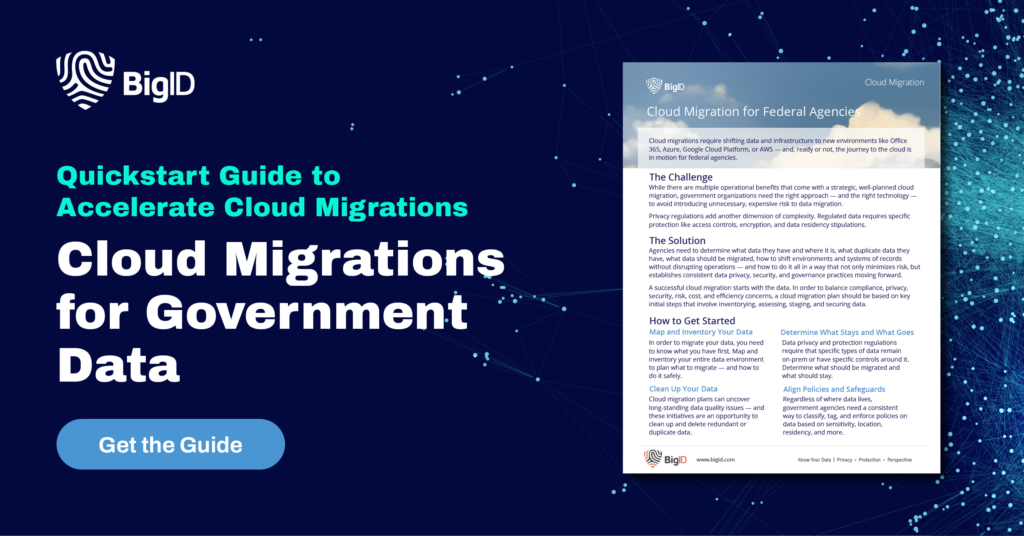Key Insights to Mastering Cloud Data
- Cloud Transformation Is More Than Just Migration
- Moving to the cloud isn’t enough—real value comes from rearchitecting apps and embracing cloud-native technologies to improve performance, agility, and innovation.
- With elastic scalability, faster deployments, and on-demand provisioning, cloud empowers businesses to respond quickly to market shifts and customer demands.
- Cloud transformation eliminates upfront infrastructure investments, reduces maintenance costs, and enables pay-as-you-go flexibility—maximizing ROI.
- Modern cloud environments often offer stronger data protection and compliance capabilities than traditional on-prem systems—debunking old security myths.
- AI-driven cloud services help automate workflows, derive real-time insights, and drive personalization—unlocking new growth and operational efficiencies.
- Organizations are increasingly leveraging both multi-cloud and hybrid cloud strategies to ensure flexibility, reduce vendor lock-in, and boost resilience.
- From IT skills development to stakeholder alignment, successful cloud initiatives hinge on internal education, change management, and leadership buy-in.
- Avoid legacy integration issues, skills gaps, cost overruns, and cultural resistance with a clear roadmap, training, governance, and phased execution.
- Leaders across industries have scaled globally, innovated faster, and improved customer experience through strategic cloud transformation.
- With automated data discovery, classification, access control, and remediation across hybrid and multi-cloud environments—BigID enables secure, scalable cloud adoption.
Revolutionizing Business Operations: The Ultimate Guide to Cloud Transformation
In today’s rapidly evolving digital landscape, businesses are constantly challenged to adapt, innovate, and stay ahead of the curve. At the heart of this transformation lies cloud computing— a revolutionary technology that has reshaped the way organizations operate, collaborate, and deliver value to customers. In this comprehensive blog, we embark on a journey to explore the transformative power of cloud transformation, delving into its definition, strategies, benefits, and much more. Join us as we break down the complexities of cloud computing and discover how it can drive your organization towards success.
What is Cloud Transformation?
Before diving into the intricacies of cloud transformation, let’s first understand what it entails. Cloud transformation is the process of migrating IT resources, applications, and services to cloud-based environments, such as public, private, or hybrid clouds. It involves leveraging cloud computing technologies to enhance agility, scalability, and efficiency, ultimately enabling organizations to adapt to changing business demands and drive innovation.
Why is Cloud Transformation Important?
Cloud transformation is important because it allows organizations to optimize their IT infrastructure and operations, leading to improved agility, scalability, and cost efficiency. By migrating their IT systems and applications to the cloud, companies can free themselves from the limitations of traditional on-premises hardware and software, and take advantage of the benefits offered by cloud computing.
With cloud transformation, organizations can rapidly provision and scale up or down their IT resources as needed, without the need for large capital expenditures or long lead times. This enables them to quickly respond to changes in market conditions or customer demands, and to take advantage of new opportunities more quickly.
Furthermore, cloud transformation can help organizations to streamline their IT operations and reduce costs. By outsourcing the management of their IT infrastructure and applications to cloud providers, companies can benefit from economies of scale and reduce the burden of managing their own IT resources. They can also benefit from improved security, data backup and recovery, and disaster recovery capabilities, which are often built into cloud services.
Benefits of Cloud Transformation
Enhanced Agility and Scalability
Cloud transformation empowers organizations to rapidly scale resources up or down based on demand, enabling them to respond quickly to market changes and customer needs. This agility allows businesses to seize new opportunities, launch products faster, and stay ahead of the competition.
Cost Optimization
By shifting IT infrastructure and workloads to the cloud, organizations can optimize costs by eliminating the need for expensive hardware investments, reducing maintenance expenses, and paying only for the resources they consume. This cost-effective approach enables businesses to reallocate resources towards strategic initiatives and innovation.
Improved Collaboration and Innovation
Cloud computing facilitates seamless collaboration and innovation by providing a centralized platform for teams to access, share, and collaborate on projects in real-time. With cloud-based tools and applications, organizations can foster creativity, drive productivity, and accelerate time-to-market for new ideas and initiatives.
Enhanced Security and Compliance
Contrary to common misconceptions, cloud computing offers robust security features and compliance frameworks that help organizations protect sensitive data, mitigate risks, and ensure regulatory compliance. Cloud providers invest heavily in advanced security measures, encryption technologies, and compliance certifications to safeguard customer data and maintain trust.

Cloud Migration vs. Cloud Transformation
While cloud migration and cloud transformation are often used interchangeably, they refer to distinct processes with different objectives. Cloud migration involves moving existing applications and workloads from on-premises infrastructure to the cloud without fundamentally altering their architecture or functionality. On the other hand, cloud transformation goes beyond migration by rearchitecting applications, adopting cloud-native technologies, and embracing new ways of working to fully leverage the benefits of the cloud.
Distinguishing Multi-Cloud and Hybrid Cloud Environments
Multi-cloud and hybrid cloud environments are two common deployment models that organizations adopt to optimize their cloud strategy. Multi-cloud refers to the use of multiple cloud providers to host different workloads and applications, offering flexibility, redundancy, and vendor diversity. Hybrid cloud, on the other hand, combines on-premises infrastructure with public and private cloud resources to create a unified, integrated environment. Both models play a crucial role in cloud transformation by providing organizations with the agility, scalability, and resilience needed to meet evolving business requirements.
Facing Common Cloud Transformation Challenges
Common challenges in both cloud migration and cloud transformation processes include:
Legacy Systems Integration
Challenge: Legacy systems often have complex architectures and dependencies, making it challenging to seamlessly integrate them with cloud-based environments.
Solution: Organizations can overcome this challenge by conducting a thorough assessment of their legacy systems, identifying dependencies, and prioritizing applications for migration or modernization. They can leverage tools and frameworks for automated migration, refactor legacy applications for cloud compatibility, or adopt hybrid cloud architectures to gradually transition critical workloads.
Data Security and Compliance
Challenge: Data security and compliance are major concerns when migrating sensitive information to the cloud, especially in highly regulated industries.
Solution: Organizations can address data security and compliance challenges by implementing robust encryption, access controls, and data loss prevention measures in the cloud. They should also ensure compliance with industry regulations and standards, such as GDPR, HIPAA, or PCI DSS, through regular audits, risk assessments, and compliance monitoring.
Cost Management and Optimization
Challenge: Cloud migration and transformation can lead to unpredictable costs, resource wastage, and budget overruns if not managed effectively.
Solution: Organizations can mitigate cost management challenges by implementing cloud cost management tools, such as cloud cost calculators, monitoring dashboards, and budgeting tools. They should optimize resource utilization, rightsizing instances, leveraging reserved instances or spot instances, and implementing cost allocation tags to track spending and optimize costs effectively.
Skills Gap and Training
Challenge: Organizations may lack the necessary skills and expertise to manage cloud environments effectively, leading to operational inefficiencies and performance issues.
Solution: Organizations can address the skills gap by investing in training and upskilling programs for their IT teams. They can provide hands-on training, certifications, and workshops on cloud technologies and best practices. Additionally, organizations can leverage managed service providers or cloud consulting firms to augment their internal capabilities and accelerate their cloud journey.
Change Management and Cultural Resistance
Challenge: Resistance to change and cultural barriers within the organization can hinder the adoption of cloud technologies and processes.
Solution: Organizations can overcome resistance to change by fostering a culture of innovation, collaboration, and continuous learning. They should communicate the benefits of cloud migration and transformation initiatives to stakeholders, involve employees in the decision-making process, and provide support and training to ease the transition. Building cross-functional teams and incentivizing cloud adoption can also help drive cultural change and promote organizational buy-in.
By addressing these common challenges proactively and adopting best practices, organizations can navigate the complexities of cloud migration and transformation more effectively, drive successful outcomes, and unlock the full potential of cloud computing.
Examples of Successful Cloud Transformation
Netflix
Netflix is a prime example of a company that has undergone a successful cloud transformation. Initially, Netflix relied on traditional data centers to host its streaming service. However, as its user base grew rapidly, it faced challenges with scalability and flexibility. In response, Netflix migrated its entire infrastructure to the cloud, specifically to Amazon Web Services (AWS). This move enabled Netflix to scale its services globally, handle peak demand during popular show releases, and innovate rapidly with new features.
Airbnb
Airbnb, the popular online marketplace for lodging and tourism experiences, also underwent a significant cloud transformation. Initially, Airbnb relied on traditional data centers for its hosting needs. However, as the company expanded globally and experienced exponential growth, it needed a more scalable and flexible infrastructure. Airbnb migrated its platform to the cloud, specifically to AWS, which allowed it to scale its operations seamlessly, handle fluctuating demand, and launch new features quickly.
GE Healthcare
GE Healthcare, a leading provider of medical imaging equipment and healthcare IT solutions, embarked on a cloud transformation journey to modernize its offerings and improve customer experience. By leveraging cloud computing services from Microsoft Azure, GE Healthcare developed cloud-based applications for medical imaging, data analytics, and patient monitoring. This shift enabled healthcare providers to access and analyze medical data more efficiently, improve diagnostic accuracy, and deliver better patient care.
These real-world examples demonstrate the transformative power of cloud computing and its ability to drive innovation, improve efficiency, and enable organizations to achieve their business objectives effectively.
Cloud Transformation vs Digital Transformation
Cloud transformation and digital transformation are related but distinct concepts.
Cloud transformation refers to the process of moving an organization’s IT infrastructure, applications, and data to cloud-based platforms. This involves transitioning from traditional on-premise data centers to a more flexible and scalable cloud computing environment.
On the other hand, digital transformation is a broader process that involves using technology to fundamentally change the way an organization operates and delivers value to its customers. This may involve adopting new digital technologies, such as artificial intelligence (AI), Internet of Things (IoT), or blockchain, to drive innovation and improve business processes.
While cloud transformation is an important component of digital transformation, it is only one piece of the puzzle. Digital transformation involves a more comprehensive approach that encompasses not just technology but also changes to business models, processes, and culture.
In summary, while cloud transformation and digital transformation are related, they are not one and the same. Cloud transformation is a key enabler of digital transformation, but digital transformation involves a broader set of changes that go beyond just the adoption of cloud computing.
Developing an Efficient Cloud Transformation Strategy
Developing an efficient cloud transformation strategy is essential for organizations looking to embark on their cloud journey successfully. Here are some key steps to consider:
- Assess Current State and Define Objectives: Start by conducting a comprehensive assessment of your existing IT infrastructure, applications, and workloads to identify areas for improvement and define clear objectives for your cloud transformation initiative.
- Choose the Right Cloud Model: Determine the most suitable cloud deployment model (public, private, hybrid, or multi-cloud) based on your organization’s requirements, regulatory considerations, and budget constraints.
- Prioritize Workloads and Applications: Prioritize workloads and applications based on factors such as criticality, complexity, and compatibility with cloud environments. Begin with low-risk, non-mission-critical workloads to gain experience and build confidence before migrating mission-critical applications.
- Develop a Roadmap and Timeline: Create a detailed roadmap and timeline that outlines the steps, milestones, and timelines for your cloud transformation journey. Break down the process into manageable phases, and allocate resources and budget accordingly.
- Implement Governance and Security Measures: Establish robust governance and security measures to ensure compliance, data protection, and risk mitigation throughout the cloud transformation process. Define policies, procedures, and controls to govern cloud usage, access, and management.
- Embrace Cloud-Native Technologies: Embrace cloud-native technologies and methodologies, such as containers, microservices, and DevOps practices, to optimize performance, scalability, and resilience in the cloud. Leverage automation, orchestration, and CI/CD pipelines to streamline deployment and operations.
The Future of Cloud Transformation
Organizations worldwide are embracing cloud transformation at an unprecedented pace. The shift towards cloud computing is not merely a trend but a fundamental evolution that is reshaping the way businesses operate, innovate, and grow. These latest statistics highlight the significance and impact of cloud transformation on the global landscape.
- Growth of Cloud Market: The exponential rise of the cloud computing market reflects the increasing reliance on cloud technologies to drive business agility, efficiency, and innovation. The global cloud computing market size is projected to reach $832.1 billion by 2025, with a compound annual growth rate (CAGR) of 17.5% from 2020 to 2025. (Source: MarketsandMarkets)
- Adoption Rates: Nearly all enterprises are embracing cloud services, with an average organization leveraging multiple public and private clouds. 94% of enterprises are already using cloud services, with the average organization using 2.2 public clouds and 2.2 private clouds. (Source: Flexera 2021 State of the Cloud Report)
- Cost Savings: Cost savings remain a key motivator of cloud migration. 66% of IT professionals report that cost savings are a significant driver of cloud migration. (Source: Flexera 2021 State of the Cloud Report)
- Agility and Innovation: Cloud adoption is synonymous with increased speed of deployment and innovation, enabling organizations to stay ahead of the competition and respond rapidly to changing market dynamics. 84% of organizations believe that cloud migration has helped them speed up the deployment of new applications. (Source: LogicMonitor).
- Scalability: Scalability not only enhances operational efficiency but also enables businesses to seize new opportunities and drive growth. 69% of organizations state that scalability is the top reason for adopting cloud services. (Source: LogicMonitor)
- Security: Contrary to misconceptions, the cloud is recognized as a secure environment for hosting sensitive data, with a majority of IT professionals expressing confidence in its security capabilities. 75% of IT professionals believe that the cloud is more secure than on-premises environments for hosting sensitive data. (Source: LogicMonitor)
- Productivity and Collaboration: Cloud-based collaboration tools are witnessing significant growth, enabling organizations to foster collaboration, productivity, and innovation across distributed teams. Cloud-based collaboration tools are expected to reach a market size of $23.87 billion by 2026, with a CAGR of 13.8% from 2021 to 2026. (Source: Mordor Intelligence)
- Remote Work Enablement: The COVID-19 pandemic has accelerated cloud migration plans, driven primarily by the need to enable remote work and ensure business continuity. 82% of businesses have accelerated their cloud migration plans due to the COVID-19 pandemic, with remote work being a primary driver. (Source: Flexera 2021 State of the Cloud Report)
- Environmental Impact: Cloud data centers are leading the charge towards environmental sustainability, with ambitious targets to reduce carbon emissions. This commitment to sustainability reflects the growing recognition of the environmental impact of IT infrastructure and the importance of adopting eco-friendly cloud solutions.
These statistics underscore the widespread adoption of cloud computing, its significant impact on business operations, and the myriad benefits it offers in terms of cost savings, agility, scalability, security, productivity, and environmental sustainability.
Artificial Intelligence (AI) Impacts on Cloud Transformation
Artificial Intelligence (AI) has emerged as a powerful enabler of cloud transformation, driving innovation, efficiency, and intelligence across various industries. AI technologies, such as machine learning, natural language processing, and computer vision, are increasingly integrated into cloud platforms, enabling organizations to extract insights, automate processes, and deliver personalized experiences at scale.
AI-powered cloud services, such as predictive analytics, recommendation engines, and chatbots, empower businesses to make data-driven decisions, anticipate customer needs, and enhance user engagement. By harnessing the combined power of AI and cloud computing, organizations can unlock new opportunities for innovation, differentiation, and growth in the digital economy.
Accelerating Your Cloud Transformation Initiatives with BigID
Embracing cloud computing can enhance an organization’s agility, optimize costs, foster innovation, and ensure security in an increasingly competitive and dynamic market landscape. As more organizations migrate to the cloud, the need for flexible and scalable security solutions is more critical than ever. BigID is the industry leading platform for data security, privacy, and governance leveraging advanced AI and machine learning for comprehensive visibility and control.
Some of the ways can BigID can help:
- Know your data: Automatically and accurately scan all your enterprise data across the multi and hybrid cloud, identify and classify by content, type and much more. Whether unstructured or structured— BigID gives you a holistic view of your entire data ecosystem.
- Reduce risk: Minimize your attack surface by deleting ROT data at scale with the Data Deletion app. Improve your risk posture and decrease your storage costs in the cloud by eliminating unnecessary data.
- Manage access: Revoke over privileged users and set policies that streamline compliance between data source owners.
- Proactive remediation: Delegate decisions to the right people, and make better data driven decisions. Assign findings and tasks to the right data owners, take action on the right data, and maintain an audit trail of all remediation activity.
To see how BigID can help your organization better protect your sensitive data in the cloud — book a 1:1 demo with our security experts today.



